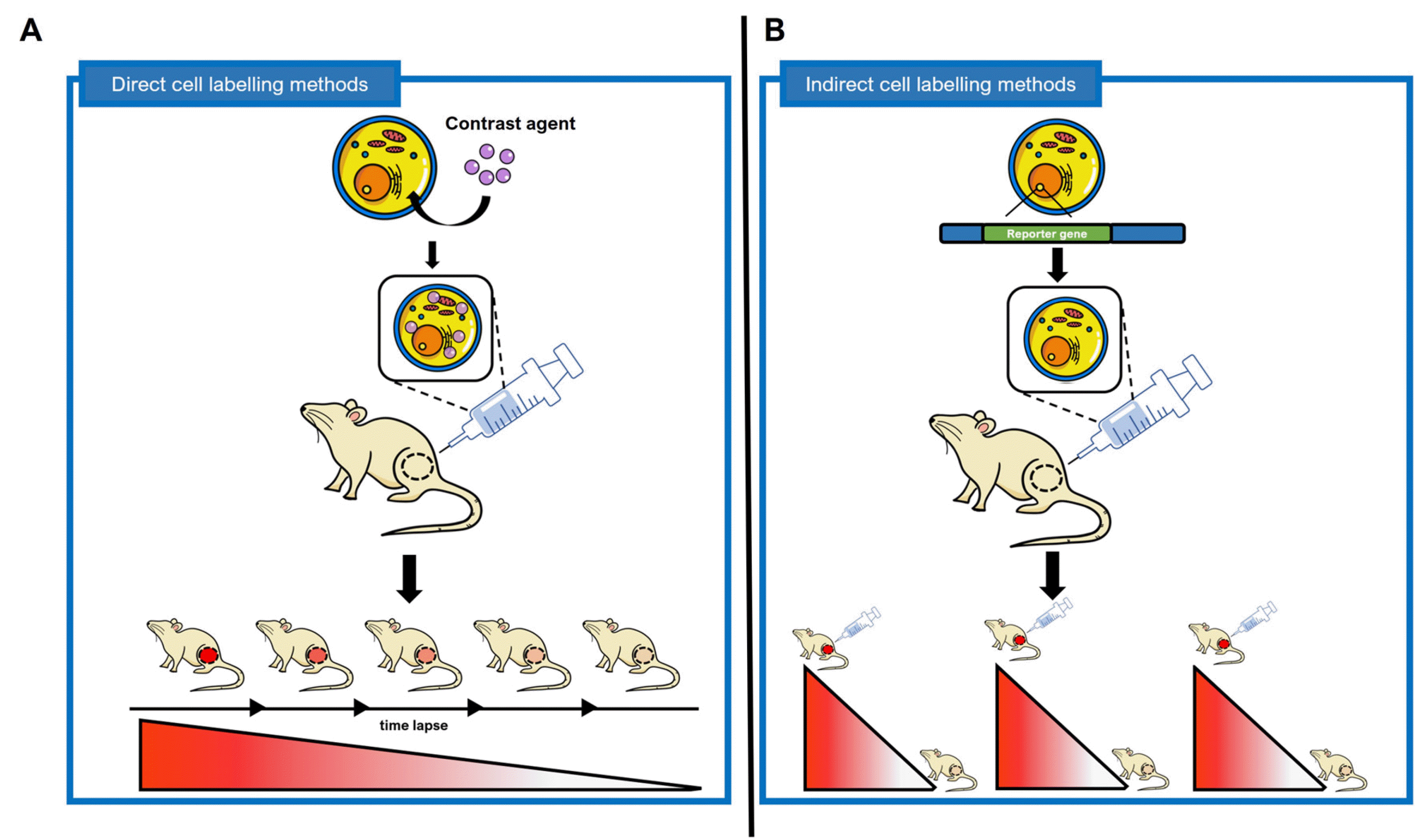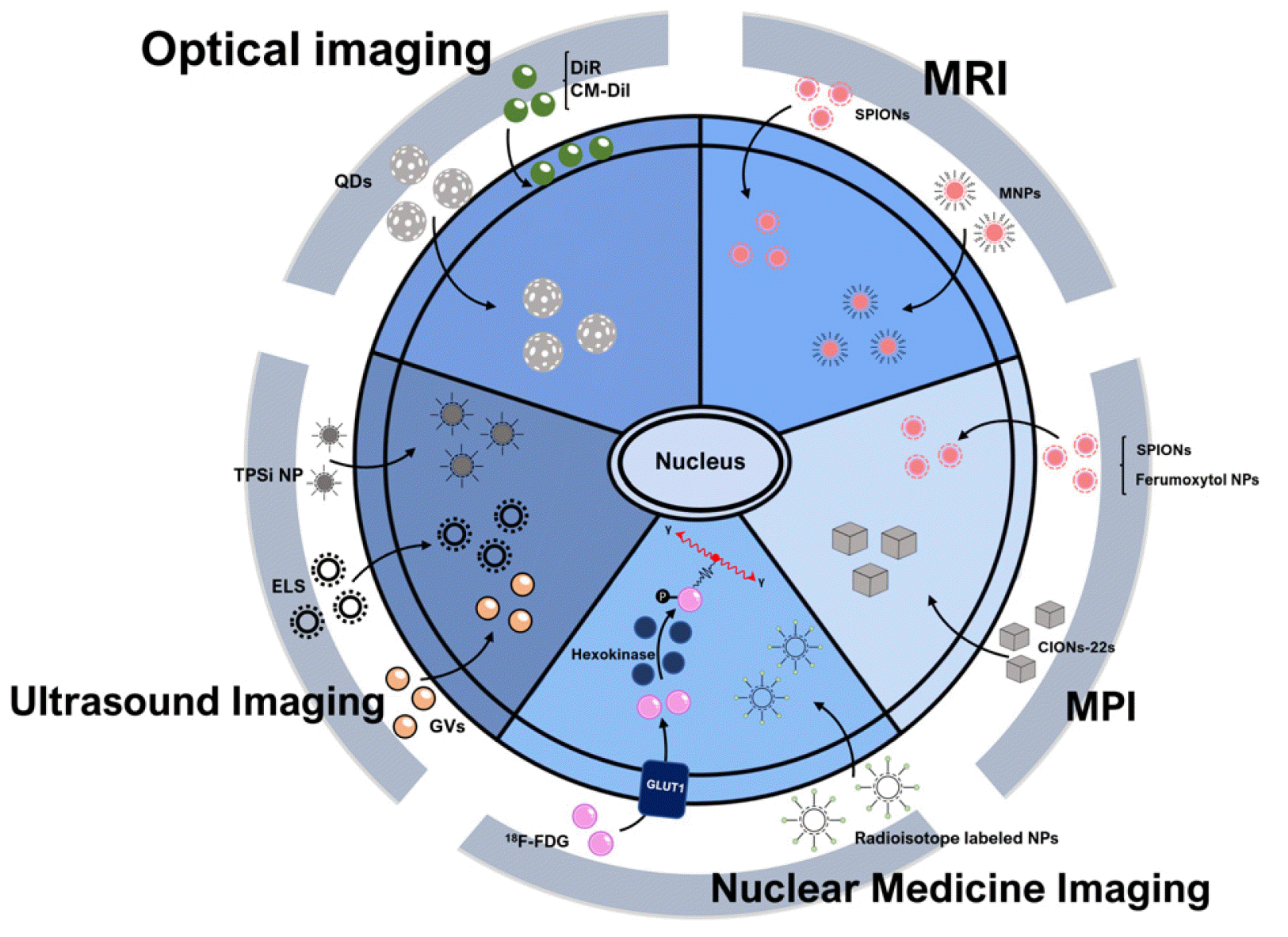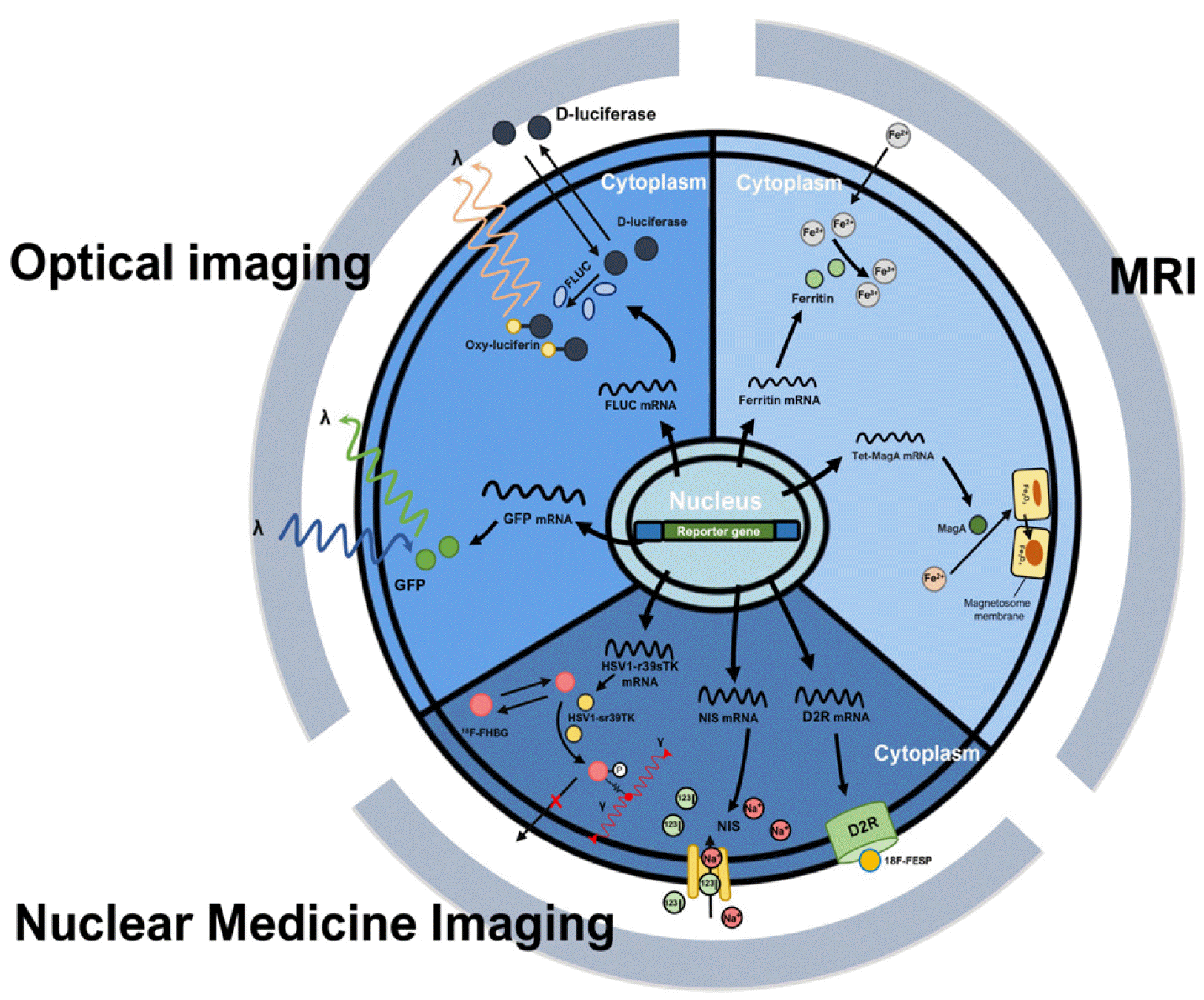3. Leferink AM, Chng YC, van Blitterswijk CA, Moroni L. 2015; Distribution and viability of fetal and adult human bone marrow stromal cells in a biaxial rotating vessel bioreactor after seeding on polymeric 3D additive manufactured scaffolds. Front Bioeng Biotechnol. 3:169. DOI:
10.3389/fbioe.2015.00169. PMID:
26557644. PMCID:
PMC4617101. PMID:
084e7c5cf3844c6fba70e5b7514f6d31.

5. Garzón I, Pérez-Köhler B, Garrido-Gómez J, et al. 2012; Evalua-tion of the cell viability of human Wharton's jelly stem cells for use in cell therapy. Tissue Eng Part C Methods. 18:408–419. DOI:
10.1089/ten.tec.2011.0508. PMID:
22166141. PMCID:
PMC3358099.

6. Thompson PA, Perera T, Marin D, et al. 2016; Double umbilical cord blood transplant is effective therapy for relapsed or refractory Hodgkin lymphoma. Leuk Lymphoma. 57:1607–1615. DOI:
10.3109/10428194.2015.1105370. PMID:
26472485. PMCID:
PMC6545894.

11. Iwano S, Sugiyama M, Hama H, et al. 2018; Single-cell biolu-minescence imaging of deep tissue in freely moving ani-mals. Science. 359:935–939. DOI:
10.1126/science.aaq1067. PMID:
29472486.

12. Herynek V, Turnovcová K, Gálisová A, et al. 2019; Manganese-zinc ferrites: safe and efficient nanolabels for cell imaging and tracking in vivo. ChemistryOpen. 8:155–165. DOI:
10.1002/open.201800261. PMID:
30740290. PMCID:
PMC6356160.

13. Man F, Lim L, Volpe A, et al. 2019; In vivo PET tracking of
89Zr-Labeled Vγ9Vδ2 T cells to mouse xenograft breast tumors activated with liposomal alendronate. Mol Ther. 27:219–229. DOI:
10.1016/j.ymthe.2018.10.006. PMID:
30429045. PMCID:
PMC6318719.

16. Concilio SC, Russell SJ, Peng KW. 2021; A brief review of reporter gene imaging in oncolytic virotherapy and gene therapy. Mol Ther Oncolytics. 21:98–109. DOI:
10.1016/j.omto.2021.03.006. PMID:
33981826. PMCID:
PMC8065251.

19. Kalchenko V, Shivtiel S, Malina V, et al. 2006; Use of lipophilic near-infrared dye in whole-body optical imaging of hematopoietic cell homing. J Biomed Opt. 11:050507. DOI:
10.1117/1.2364903. PMID:
17092148.

20. Seleverstov O, Zabirnyk O, Zscharnack M, et al. 2006; Quantum dots for human mesenchymal stem cells labeling. A size-dependent autophagy activation. Nano Lett. 6:2826–2832. DOI:
10.1021/nl0619711. PMID:
17163713.

22. Ruan J, Song H, Li C, et al. 2012; DiR-labeled embryonic stem cells for targeted imaging of
in vivo gastric cancer cells. Theranostics. 2:618–628. DOI:
10.7150/thno.4561. PMID:
22768029. PMCID:
PMC3388594.

23. Lassailly F, Griessinger E, Bonnet D. 2010; "Microenvironmental contaminations" induced by fluorescent lipophilic dyes used for noninvasive
in vitro and
in vivo cell tracking. Blood. 115:5347–5354. DOI:
10.1182/blood-2009-05-224030. PMID:
20215639.

25. Akhan E, Tuncel D, Akcali KC. 2015; Nanoparticle labeling of bone marrow-derived rat mesenchymal stem cells: their use in differentiation and tracking. Biomed Res Int. 2015:298430. DOI:
10.1155/2015/298430. PMID:
25654092. PMCID:
PMC4310257.

26. Hu SL, Lu PG, Zhang LJ, et al. 2012; In vivo magnetic resonance imaging tracking of SPIO-labeled human umbilical cord mesenchymal stem cells. J Cell Biochem. 113:1005–1012. DOI:
10.1002/jcb.23432. PMID:
22065605.

28. Pang P, Wu C, Gong F, et al. 2015; Nanovector for gene transfection and MR imaging of mesenchymal stem cells. J Biomed Nanotechnol. 11:644–656. DOI:
10.1166/jbn.2015.1967. PMID:
26310071.

29. Kim TH, Kim JK, Shim W, Kim SY, Park TJ, Jung JY. 2010; Tracking of transplanted mesenchymal stem cells labeled with fluorescent magnetic nanoparticle in liver cirrhosis rat model with 3-T MRI. Magn Reson Imaging. 28:1004–1013. DOI:
10.1016/j.mri.2010.03.047. PMID:
20663626.

30. Walczak P, Kedziorek DA, Gilad AA, Lin S, Bulte JW. 2005; Instant MR labeling of stem cells using magnetoelectro-poration. Magn Reson Med. 54:769–774. DOI:
10.1002/mrm.20701. PMID:
16161115.

31. Zhou XY, Tay ZW, Chandrasekharan P, et al. 2018; Magnetic particle imaging for radiation-free, sensitive and high-contrast vascular imaging and cell tracking. Curr Opin Chem Biol. 45:131–138. DOI:
10.1016/j.cbpa.2018.04.014. PMID:
29754007. PMCID:
PMC6500458.

33. Zheng B, von See MP, Yu E, et al. 2016; Quantitative magnetic particle imaging monitors the transplantation, biodistri-bution, and clearance of stem cells in vivo. Theranostics. 6:291–301. DOI:
10.7150/thno.13728. PMID:
26909106. PMCID:
PMC4737718.

34. Sehl OC, Makela AV, Hamilton AM, Foster PJ. 2019; Trimodal cell tracking in vivo: combining iron- and fluorine-based magnetic resonance imaging with magnetic particle imaging to monitor the delivery of mesenchymal stem cells and the ensuing inflammation. Tomography. 5:367–376. DOI:
10.18383/j.tom.2019.00020. PMID:
31893235. PMCID:
PMC6935990.

35. Wang Q, Ma X, Liao H, et al. 2020; Artificially engineered cubic iron oxide nanoparticle as a high-performance magnetic particle imaging tracer for stem cell tracking. ACS Nano. 14:2053–2062. DOI:
10.1021/acsnano.9b08660. PMID:
31999433.

37. Tong L, Zhao H, He Z, Li Z. Erondu OF, editor. 2013. Current perspectives on molecular imaging for tracking stem cell therapy. Medical Imaging in Clinical Practice. InTech;p. 63–79. DOI:
10.5772/53028.
39. Kapoor V, McCook BM, Torok FS. 2004; An introduction to PET-CT imaging. Radiographics. 24:523–543. DOI:
10.1148/rg.242025724. PMID:
15026598.

42. Yao M, Shi X, Zuo C, et al. 2020; Engineering of SPECT/photoacoustic imaging/antioxidative stress triple-function nanoprobe for advanced mesenchymal stem cell therapy of cerebral ischemia. ACS Appl Mater Interfaces. 12:37885–37895. DOI:
10.1021/acsami.0c10500. PMID:
32806884.

44. Zaw Thin M, Allan H, Bofinger R, et al. 2020; Multi-modal imaging probe for assessing the efficiency of stem cell delivery to orthotopic breast tumours. Nanoscale. 12:16570–16585. DOI:
10.1039/D0NR03237A. PMID:
32749427. PMCID:
PMC7586303.

47. James ML, Gambhir SS. 2012; A molecular imaging primer: modalities, imaging agents, and applications. Physiol Rev. 92:897–965. DOI:
10.1152/physrev.00049.2010. PMID:
22535898.

48. Xu C, Feng Q, Ning P, Li Z, Qin Y, Cheng Y. 2021; Recent advances on nanoparticle-based imaging contrast agents for in vivo stem cell tracking. Mat Matters. 16:2.
49. Chen F, Ma M, Wang J, et al. 2017; Exosome-like silica nanoparticles: a novel ultrasound contrast agent for stem cell imaging. Nanoscale. 9:402–411. DOI:
10.1039/C6NR08177K. PMID:
27924340. PMCID:
PMC5179289.

50. Qi S, Zhang P, Ma M, et al. 2019; Cellular internalization-in-duced aggregation of porous silicon nanoparticles for ultrasound imaging and protein-mediated protection of stem cells. Small. 15:e1804332. DOI:
10.1002/smll.201804332. PMID:
30488562.

51. Gong Z, He Y, Zhou M, et al. 2022; Ultrasound imaging tracking of mesenchymal stem cells intracellularly labeled with biosynthetic gas vesicles for treatment of rheumatoid arthritis. Theranostics. 12:2370–2382. DOI:
10.7150/thno.66905. PMID:
35265215. PMCID:
PMC8899585.

52. Gawne PJ, Man F, Blower PJ. T M de Rosales R. 2022; Direct cell radiolabeling for
in vivo cell tracking with PET and SPECT imaging. Chem Rev. 122:10266–10318. DOI:
10.1021/acs.chemrev.1c00767. PMID:
35549242. PMCID:
PMC9185691.

53. Kang JH, Chung JK. 2008; Molecular-genetic imaging based on reporter gene expression. J Nucl Med. 49 Suppl 2:164S–179S. DOI:
10.2967/jnumed.107.045955. PMID:
18523072.

54. Müller-Taubenberger A. 2006; Application of fluorescent protein tags as reporters in live-cell imaging studies. Methods Mol Biol. 346:229–246. DOI:
10.1385/1-59745-144-4:229. PMID:
16957294.

55. Chudakov DM, Lukyanov S, Lukyanov KA. 2005; Fluorescent proteins as a toolkit for in vivo imaging. Trends Biotechnol. 23:605–613. DOI:
10.1016/j.tibtech.2005.10.005. PMID:
16269193.

57. Chen Q, Wang X, Wu H, et al. 2016; Establishment of a dual-color fluorescence tracing orthotopic transplantation model of hepatocellular carcinoma. Mol Med Rep. 13:762–768. DOI:
10.3892/mmr.2015.4624. PMID:
26647736. PMCID:
PMC4686090.

58. Troy T, Jekic-McMullen D, Sambucetti L, Rice B. 2004; Quan-titative comparison of the sensitivity of detection of fluorescent and bioluminescent reporters in animal models. Mol Imaging. 3:9–23. DOI:
10.1162/153535004773861688. PMID:
15142408.

60. Ezzat T, Dhar DK, Malago M, Olde Damink SW. 2012; Dynamic tracking of stem cells in an acute liver failure model. World J Gastroenterol. 18:507–516. DOI:
10.3748/wjg.v18.i6.507. PMID:
22363116. PMCID:
PMC3280395.

61. Bhaumik S, Lewis XZ, Gambhir SS. 2004; Optical imaging of Renilla luciferase, synthetic Renilla luciferase, and firefly luciferase reporter gene expression in living mice. J Biomed Opt. 9:578–586. DOI:
10.1117/1.1647546. PMID:
15189096.

63. Iyer M, Sato M, Johnson M, Gambhir SS, Wu L. 2005; Applications of molecular imaging in cancer gene therapy. Curr Gene Ther. 5:607–618. DOI:
10.2174/156652305774964695. PMID:
16457650.

64. Subramaniam D, Natarajan G, Ramalingam S, et al. 2008; Trans-lation inhibition during cell cycle arrest and apoptosis: Mcl-1 is a novel target for RNA binding protein CUGBP2. Am J Physiol Gastrointest Liver Physiol. 294:G1025–G1032. DOI:
10.1152/ajpgi.00602.2007. PMID:
18292181.

65. van der Bogt KE, Sheikh AY, Schrepfer S, et al. 2008; Compa-rison of different adult stem cell types for treatment of myocardial ischemia. Circulation. 118(14 Suppl):S121–S129. DOI:
10.1161/CIRCULATIONAHA.107.759480. PMID:
18824743. PMCID:
PMC3657517.

72. Weissleder R, Moore A, Mahmood U, et al. 2000; In vivo magnetic resonance imaging of transgene expression. Nat Med. 6:351–354. DOI:
10.1038/73219. PMID:
10700241.

75. Cohen B, Ziv K, Plaks V, et al. 2007; MRI detection of transcriptional regulation of gene expression in transgenic mice. Nat Med. 13:498–503. DOI:
10.1038/nm1497. PMID:
17351627.

76. Genove G, DeMarco U, Xu H, Goins WF, Ahrens ET. 2005; A new transgene reporter for in vivo magnetic resonance ima-ging. Nat Med. 11:450–454. DOI:
10.1038/nm1208. PMID:
15778721.

77. Deans AE, Wadghiri YZ, Bernas LM, Yu X, Rutt BK, Turnbull DH. 2006; Cellular MRI contrast via coexpression of transferrin receptor and ferritin. Magn Reson Med. 56:51–59. DOI:
10.1002/mrm.20914. PMID:
16724301. PMCID:
PMC4079558.

78. Cao M, Mao J, Duan X, et al. 2018; In vivo tracking of the tropism of mesenchymal stem cells to malignant gliomas using reporter gene-based MR imaging. Int J Cancer. 142:1033–1046. DOI:
10.1002/ijc.31113. PMID:
29047121.

80. Cho IK, Moran SP, Paudyal R, et al. 2014; Longitudinal monitoring of stem cell grafts in vivo using magnetic resonance imaging with inducible maga as a genetic reporter. Thera-nostics. 4:972–989. DOI:
10.7150/thno.9436. PMID:
25161700. PMCID:
PMC4143941.

81. Gambhir SS. 2002; Molecular imaging of cancer with positron emission tomography. Nat Rev Cancer. 2:683–693. DOI:
10.1038/nrc882. PMID:
12209157.

83. Tjuvajev JG, Doubrovin M, Akhurst T, et al. 2002; Comparison of radiolabeled nucleoside probes (FIAU, FHBG, and FHPG) for PET imaging of HSV1-tk gene expression. J Nucl Med. 43:1072–1083. PMID:
12163634.
84. Peñuelas I, Haberkorn U, Yaghoubi S, Gambhir SS. 2005; Gene therapy imaging in patients for oncological applications. Eur J Nucl Med Mol Imaging. 32 Suppl 2:S384–S403. DOI:
10.1007/s00259-005-1928-3. PMID:
16180032.

85. Liang Q, Satyamurthy N, Barrio JR, et al. 2001; Noninvasive, quantitative imaging in living animals of a mutant dopamine D2 receptor reporter gene in which ligand binding is uncoupled from signal transduction. Gene Ther. 8:1490–1498. DOI:
10.1038/sj.gt.3301542. PMID:
11593362.

86. Schönitzer V, Haasters F, Käsbauer S, et al. 2014; In vivo mesenchymal stem cell tracking with PET using the dopamine type 2 receptor and 18F-fallypride. J Nucl Med. 55:1342–1347. DOI:
10.2967/jnumed.113.134775. PMID:
25024426.

88. Spitzweg C, Bible KC, Hofbauer LC, Morris JC. 2014; Advanced radioiodine-refractory differentiated thyroid cancer: the sodium iodide symporter and other emerging therapeutic targets. Lancet Diabetes Endocrinol. 2:830–842. DOI:
10.1016/S2213-8587(14)70051-8. PMID:
24898835.

89. Gu E, Chen WY, Gu J, Burridge P, Wu JC. 2012; Molecular imaging of stem cells: tracking survival, biodistribution, tumorigenicity, and immunogenicity. Theranostics. 2:335–345. DOI:
10.7150/thno.3666. PMID:
22509197. PMCID:
PMC3326720.

90. Terrovitis J, Kwok KF, Lautamäki R, et al. 2008; Ectopic expression of the sodium-iodide symporter enables imaging of transplanted cardiac stem cells in vivo by single-photon emission computed tomography or positron emission tomo-graphy. J Am Coll Cardiol. 52:1652–1660. DOI:
10.1016/j.jacc.2008.06.051. PMID:
18992656. PMCID:
PMC4980098.

91. Dwyer RM, Ryan J, Havelin RJ, et al. 2011; Mesenchymal Stem Cell-mediated delivery of the sodium iodide symporter supports radionuclide imaging and treatment of breast cancer. Stem Cells. 29:1149–1157. DOI:
10.1002/stem.665. PMID:
21608083. PMCID:
PMC3998644.

94. Knoop K, Kolokythas M, Klutz K, et al. 2011; Image-guided, tumor stroma-targeted 131I therapy of hepatocellular cancer after systemic mesenchymal stem cell-mediated NIS gene delivery. Mol Ther. 19:1704–1713. DOI:
10.1038/mt.2011.93. PMID:
21587211. PMCID:
PMC3182369.

95. Conrad C, Hüsemann Y, Niess H, et al. 2011; Linking transgene expression of engineered mesenchymal stem cells and angiopoietin-1-induced differentiation to target cancer angio-genesis. Ann Surg. 253:566–571. DOI:
10.1097/SLA.0b013e3181fcb5d8. PMID:
21169810.








 PDF
PDF Citation
Citation Print
Print



 XML Download
XML Download